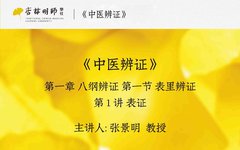Lecture on TCM Diagnosis Chapter 1: Differentiating Eight Principles
Section 1: Differentiating Exterior and Interior Patterns – Lecture 1: Exterior Patterns
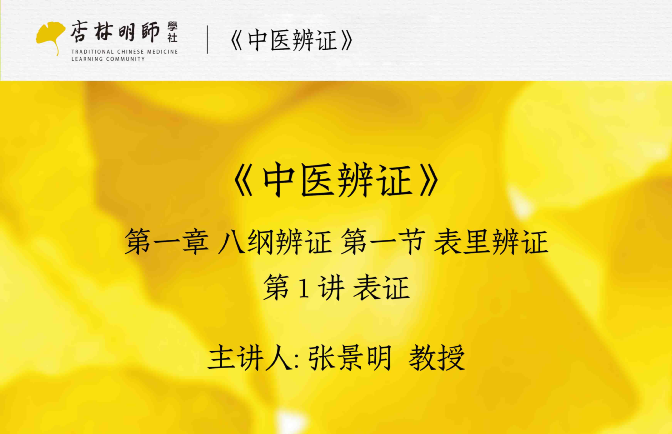
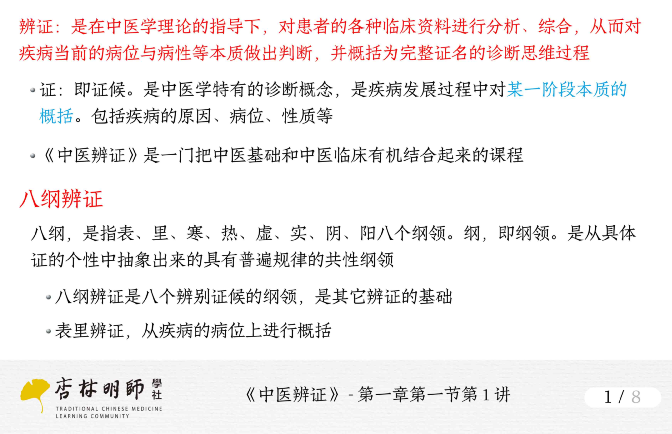
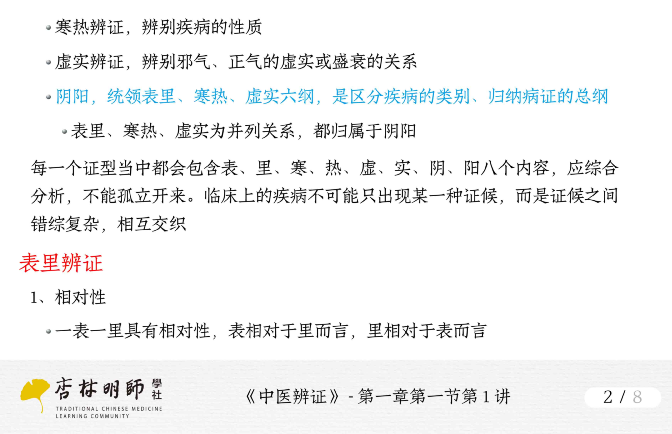
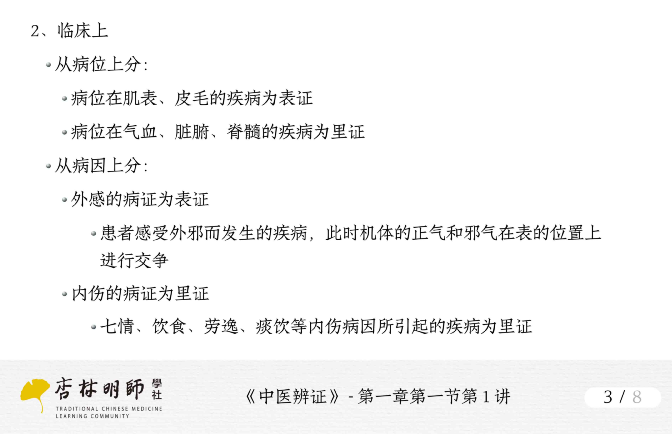
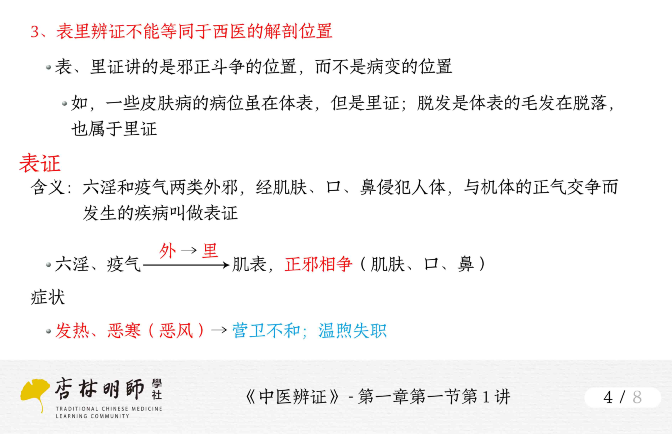
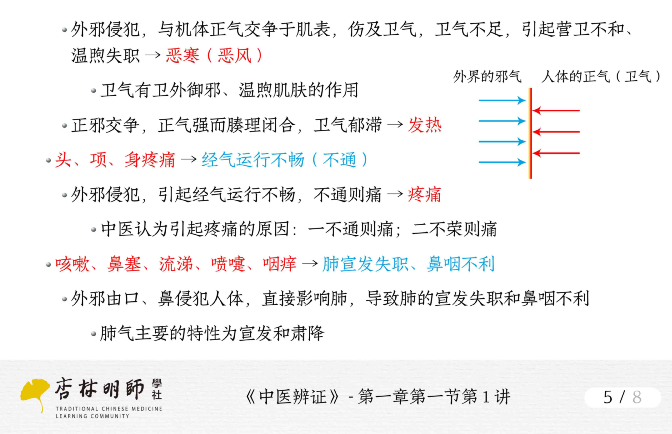

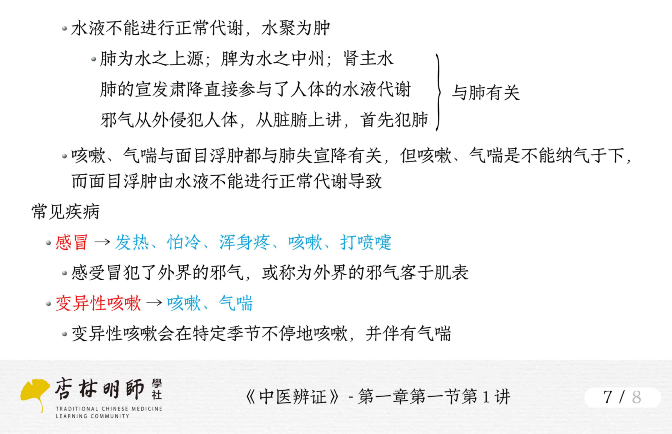
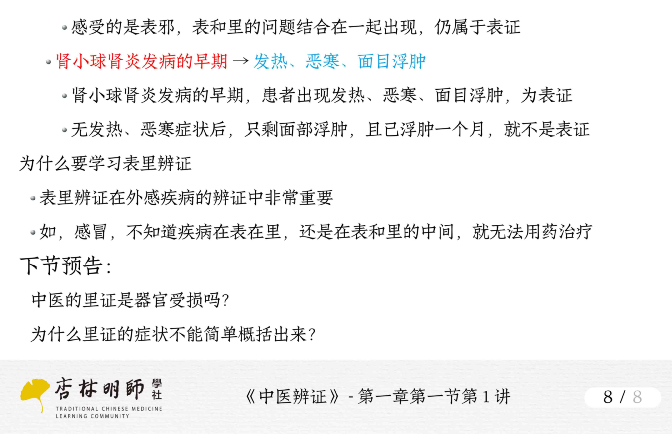
1. Question: What is an exterior pattern?
Answer: An exterior pattern refers to the symptoms produced when external pathogenic factors, such as the six excesses (liù yín), invade the body through the skin and mucous membranes. It is commonly seen in the early stages of external diseases, characterized by sudden onset and a short duration.
The main symptoms include chills and fever, body aches, nasal congestion with runny nose, cough, sneezing, sore throat, thin white tongue coating, and floating pulse.
2. Question: What does “for every degree of chill, there is a degree of exterior pattern” mean?
Answer: The “Shang Han Lun” states: “In Taiyang disease, whether there is fever or not, there must be chills.” Therefore, for every degree of chill, there is a degree of exterior pattern. Chills belong to the category of exterior patterns. Thus, discussing chills must involve exterior patterns.
When an external pathogen invades the skin, the defensive qi (wei qi) resists, and the pathogen struggles at the skin level, resulting in chills and fever. Chills occur because the defensive qi is engaged in fighting the pathogenic qi, weakening its warming function.
3. Question: Why do chills and fever occur in exterior patterns?
Answer: Chills occur because the struggle between righteous qi and pathogenic qi damages the defensive qi, which has a warming function. When the defensive qi is damaged, its warming ability is disrupted, leading to the occurrence of chills.
Fever occurs because the external pathogen is strong, and the righteous qi is not deficient; during the struggle, the pores are closed, and the defensive qi becomes stagnant, transforming into heat. In exterior patterns, if fever occurs, it indicates that the righteous qi is sufficient.
4. Question: Is hair loss a manifestation of an exterior pattern?
Answer: No, an exterior pattern refers to the struggle between the pathogenic qi and the righteous qi at the skin level. Hair loss is primarily a result of internal organ dysfunction related to qi and blood, thus belonging to an interior pattern. We must not mechanically interpret exterior patterns as diseases that manifest solely at the skin level.
5. Question: What does “no flow means pain, no nourishment means pain” mean?
Answer: “No flow means pain” indicates that when the qi and blood in the meridians are obstructed, various pains will arise, which we call “excess pain”. For example, the most common is blood stasis, which presents as stabbing pain, with fixed pain that resists pressure. Additionally, when cold pathogens invade the stomach, obstructing the qi mechanism, it leads to severe pain in the stomach area, which is relieved by warmth.
“No nourishment means pain” refers to the insufficient qi and blood in the meridians, which fails to nourish the body, leading to pain, termed “deficiency pain” in TCM. For example, blood deficiency headache.
6. Question: Where does the wind-cold exterior excess pattern fit in the eight principles differentiation?
Answer: The wind-cold exterior excess pattern is primarily an exterior pattern, followed by a cold pattern, and then an excess pattern, which belongs to the yin pattern. Thus, it can be seen that most clinical patterns are composite types of the eight principles, rather than single types.
The eight principles differentiation serves as a guideline for diagnosis.
7. Question: Which organ is most closely related to exterior patterns?
Answer: The lung, as it governs the skin and hair. The clear qi inhaled by the lung can transform into defensive qi, helping the body resist external pathogens. When lung qi is weak and unable to resist external pathogens, symptoms such as cough and sneezing will appear due to the lung’s failure to disperse and descend.
8. Question: Are skin diseases considered exterior patterns?
Answer: No, an exterior pattern refers to the struggle between the pathogenic qi and the righteous qi at the skin level. While skin diseases occur at the skin, not all diseases manifesting at the skin level are exterior patterns; we must not mechanically interpret exterior patterns as diseases that occur solely at the skin level.
9. Question: What is meant by exterior patterns? Where is the location of the disease?
Answer: An exterior pattern refers to the symptoms produced when external pathogenic factors, such as the six excesses, invade the body through the skin, mouth, and nose, and the struggle between the pathogenic and righteous qi occurs at the skin level. It is a type of disease that is relatively superficial and mild, with the disease location primarily at the skin and muscle level, also known as the “cì lǐ”.
10. Question: How to differentiate exterior patterns?
Answer: (1) This pattern is characterized by external pathogens attacking the surface, with the defensive yang qi being obstructed as its pathogenesis.
(2) It often occurs in the early stages of external diseases, characterized by sudden onset and short duration.
(3) The main symptoms are chills and fever, with a thin white tongue coating and floating pulse.
(4) It may also include symptoms such as nasal congestion, runny nose, sore throat, cough, and sneezing, indicating the lung’s failure to disperse and descend.
11. Question: What is the eight principles differentiation?
Answer: The eight principles refer to the eight categories: yin, yang, exterior, interior, cold, heat, deficiency, and excess. The differentiation of exterior and interior indicates the location of the disease, while cold and heat indicate the nature of the disease, and deficiency and excess indicate the state of the righteous qi. Yin and yang serve as the overarching principles.
Exterior and interior have relative meanings. External diseases are considered exterior patterns, while internal injuries are considered interior patterns, and external and internal do not equate to anatomical locations in Western medicine!
The differentiation framework plays a crucial role in the diagnostic process, simplifying complex conditions and guiding clinical practice across various specialties.

